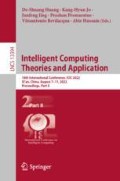Abstract
Predicting drug-disease associations (DDAs) is a significant part of drug discovery. With the continuous accumulation of biomedical data, multidimensional metrics about drugs and diseases are obtained, therefore how to effectively integrate them into computational models has become the focus of research. However, traditional methods only roughly integrate data without considering their differences. In this paper, we introduce a novel method for DDAs prediction based on self-topological generalized matrix factorization with neighborhood constraints (NSGMF). Instead of giving the same attention to each similarity metric, we perform data fusion with different information average entropy weights. And the fused data is used as constraint terms for matrix factorization to predict unknown DDAs. In addition, self-topological information is used to provide node feature indication in matrix factorization, which will effectively get rid of the problem that traditional matrix factorization is sensitive to external information. The experimental results of cross validation show that NSGMF method has better comprehensive performance than other DDAs prediction methods.
Access this chapter
Tax calculation will be finalised at checkout
Purchases are for personal use only
References
Martin, L., Hutchens, M., Hawkins, C., Radnov, A.: How much do clinical trials cost? Nat. Rev. Drug Discov. 16, 381–382 (2017)
Nelson, B.S., Kremer, D.M., Lyssiotis, C.A.: New tricks for an old drug. Nat. Chem. Biol. 14, 990–991 (2018)
Luo, H., Li, M., Yang, M., Wu, F.-X., Li, Y., Wang, J.: Biomedical data and computational models for drug repositioning: a comprehensive review. Brief. Bioinform. 22, 1604–1619 (2021)
Hu, P., et al.: Learning from low-rank multimodal representations for predicting disease-drug associations. BMC Med. Inform. Decis. Mak. 21, 1–13 (2021)
Yang, M., Huang, L., Xu, Y., Lu, C., Wang, J.: Heterogeneous graph inference with matrix completion for computational drug repositioning. Bioinformatics 36, 5456–5464 (2021)
Liu, H., Zhang, W., Nie, L., Ding, X., Luo, J., Zou, L.: Predicting effective drug combinations using gradient tree boosting based on features extracted from drug-protein heterogeneous network. BMC Bioinf. 20, 1–12 (2019)
Yella, J., Jegga, A.: MGATRx: discovering drug repositioning candidates using multi-view graph attention. In: IEEE/ACM Transactions on Computational Biology and Bioinformatics, p. 1 (2021)
Zhang, Z.-C., Zhang, X.-F., Wu, M., Ou-Yang, L., Zhao, X.-M., Li, X.-L.: A graph regularized generalized matrix factorization model for predicting links in biomedical bipartite networks. Bioinformatics 36, 3474–3481 (2020)
Li, M., Liu, M., Bin, Y., Xia, J.: Prediction of circRNA-disease associations based on inductive matrix completion. BMC Med. Genom. 13, 1–13 (2020)
Martínez, V., Navarro, C., Cano, C., Fajardo, W., Blanco, A.: DrugNet: network-based drug–disease prioritization by integrating heterogeneous data. Artif. Intell. Med. 63, 41–49 (2015)
Wang, W., Yang, S., Zhang, X., Li, J.: Drug repositioning by integrating target information through a heterogeneous network model. Bioinformatics 30, 2923–2930 (2014)
Luo, H., et al.: Drug repositioning based on comprehensive similarity measures and Bi-Random walk algorithm. Bioinformatics 32, 2664–2671 (2016)
Gottlieb, A., Stein, G., Ruppin, E., Sharan, R.: PREDICT: a method for inferring novel drug indications with application to personalized medicine. Mol. Syst. Biol. 7, 496 (2011)
Yang, L., Agarwal, P.: Systematic drug repositioning based on clinical side-effects. PLoS ONE 6, e28025 (2011)
Moghadam, H., Rahgozar, M., Gharaghani, S.: Scoring multiple features to predict drug disease associations using information fusion and aggregation. SAR QSAR Environ. Res. 27, 1–20 (2016)
Liang, X., et al.: LRSSL: predict and interpret drug-disease associations based on data integration using sparse subspace learning. Bioinformatics 33, 1187–1196 (2017)
Zeng, X., Zhu, S., Liu, X., Zhou, Y., Nussinov, R., Cheng, F.: DeepDR: a network-based deep learning approach to in silico drug repositioning. Bioinformatics 35, 5191–5198 (2019)
Yu, Z., Huang, F., Zhao, X., Xiao, W., Zhang, W.: Predicting drug-disease associations through layer attention graph convolutional network. Brief. Bioinform. 22, 1–11 (2021)
Luo, H., Li, M., Wang, S., Liu, Q., Li, Y., Wang, J.: Computational drug repositioning using low-rank matrix approximation and randomized algorithms. Bioinformatics 34, 1904–1912 (2018)
Yang, M., Luo, H., Li, Y., Wang, J.: Drug repositioning based on bounded nuclear norm regularization. Bioinformatics 35, i455–i463 (2019)
Zhang, W., et al.: Predicting drug-disease associations by using similarity constrained matrix factorization. BMC Bioinf. 19, 1–12 (2018)
Wang, B., et al.: Similarity network fusion for aggregating data types on a genomic scale. Nat. Methods 11, 333–337 (2014)
Kingma, D., Ba, J.: Adam: a method for Ssochastic optimization. In: International Conference on Learning Representations (2017)
Yang, M., Wu, G., Zhao, Q., Li, Y., Wang, J.: Computational drug repositioning based on multi-similarities bilinear matrix factorization. Brief. Bioinform. 22, 1–14 (2021)
Davis, A.P., et al.: The comparative toxicogenomics database: update 2013. Nucleic Acids Res. 41, D1104–D1114 (2013)
Acknowledgments
The research is supported by the Strategic Priority Research Program of the Chinese Academy of Sciences (No. XDA16021400), and the NSFC projects grants (U19A2064, 61932018, 62072441 and 62072280).
Author information
Authors and Affiliations
Corresponding authors
Editor information
Editors and Affiliations
Rights and permissions
Copyright information
© 2022 The Author(s), under exclusive license to Springer Nature Switzerland AG
About this paper
Cite this paper
Li, X., Zhang, Q., Zuo, Z., Yan, R., Zheng, C., Zhang, F. (2022). Predicting Drug-Disease Associations by Self-topological Generalized Matrix Factorization with Neighborhood Constraints. In: Huang, DS., Jo, KH., Jing, J., Premaratne, P., Bevilacqua, V., Hussain, A. (eds) Intelligent Computing Theories and Application. ICIC 2022. Lecture Notes in Computer Science, vol 13394. Springer, Cham. https://doi.org/10.1007/978-3-031-13829-4_12
Download citation
DOI: https://doi.org/10.1007/978-3-031-13829-4_12
Published:
Publisher Name: Springer, Cham
Print ISBN: 978-3-031-13828-7
Online ISBN: 978-3-031-13829-4
eBook Packages: Computer ScienceComputer Science (R0)

